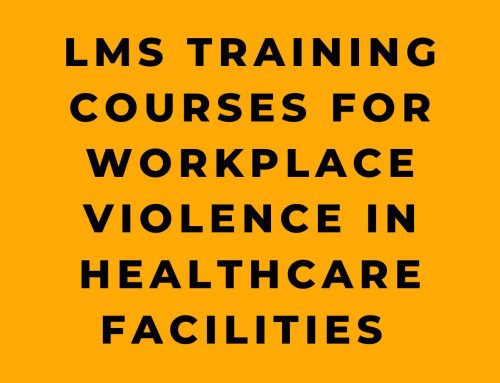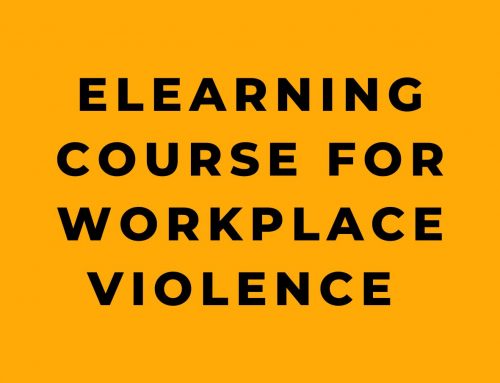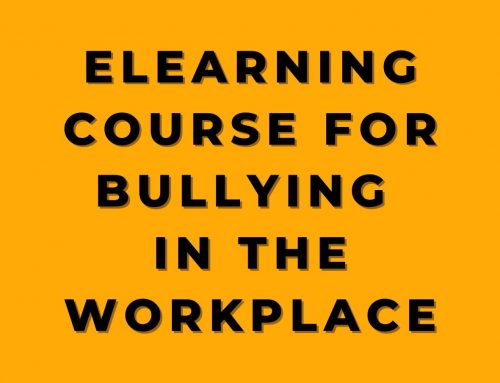Workplace violence affects over 2 million American workers annually, according to Bureau of Labor Statistics data. Despite its prevalence, many organizations fail to adopt proactive prevention strategies, responding only after incidents occur. However, a reactive approach often proves inadequate in protecting employees.
This comprehensive guide, adapted from an online workplace safety training course, provides detailed guidance on recognizing early warning signs, establishing reporting procedures, applying de-escalation tactics, and developing organizational violence prevention programs. A collaborative commitment to proactive, evidence-based prevention can significantly mitigate workplace violence risks.
Defining the Scope of Workplace Violence
While dramatic physical assaults and homicides often garner media attention, workplace violence encompasses a far broader range of behaviors. Threats, harassment, verbal abuse, bullying, intimidation, and physical attacks all qualify as violence, regardless of gender. Psychological harm stemming from emotional abuse or intimidation can equal physical injury in severity and long-term trauma.
Violence may originate from both internal and external sources. Interpersonal conflicts between employees frequently precipitate aggressive behaviors. However, threats also arise from interactions with customers, vendors, trespassers, and even domestic abuse situations entering the workplace.
Some key insights on the scope of workplace violence include:
- Violence includes verbal attacks, emotional abuse, threats, bullying, harassment, and physical assaults. Psychological harm can be as damaging as physical acts.
- Customers, intruders, domestic violence, and internal personal conflicts can all spark workplace violence.
- According to OSHA, employers must provide hazard-free workplaces. Workplace violence constitutes a recognized occupational hazard.
- Unchecked violence destroys morale, causes excessive stress, and endangers employees. Proactive prevention is essential.
Recognizing Warning Signs and Red Flags
Individuals prone to workplace violence often display warning signs well in advance of physical acts. While not definitive predictors, the following behaviors should prompt vigilance and reporting when escalating or persistent:
- Extreme mood swings, irritability, and emotional outbursts
- Defensiveness and overreactions to criticism
- Frequent unjustified complaints and blame directed at others
- Comments about retribution or “getting even” with someone
- Lateness, absenteeism, disappearing from workstations
- Carelessness, distractedness, accidents indicating troubling thoughts
- Focus on previous incidents of violence
However, managers and coworkers often dismiss such signs as personality quirks or normal expressions of frustration. This enables conflicts to steadily escalate over time, eventually boiling over into outright violence and causing severe physical or psychological harm.
Importance of Reporting All Aggressive Behaviors
Employees often hesitate to report colleague aggression, hoping issues will resolve independently or reluctant to get coworkers in trouble. However, timely reporting represents the best opportunity to intervene before a conflict becomes violent. Reporting gets troubled individuals necessary assistance and prevents future harm.
Employees should report any aggressive or threatening behaviors they experience or witness to management, HR, security personnel, or law enforcement. Many organizations also have anonymous hotlines or Employee Assistance Programs that allow confidential reporting. All reports should be well-documented for reference.
The various types of aggressive behaviors that warrant reporting include:
- Threats – can be veiled, conditional, or direct
- Sexual harassment – unwelcome sexual remarks, gestures, physical contact
- Verbal abuse – insults, mocking, intimidation
- Bullying – intentionally harming or demeaning others
Avoiding and Defusing Volatile Situations
While bystanders should report aggressive interactions, personal involvement may worsen situations. Physical or verbal confrontations must be avoided whenever possible when tensions run high.
If directly engaged by an agitated, unstable individual:
- Remain calm. Keep arms in a non-threatening position. Maintain distance.
- Avoid physical contact. Use a soothing tone of voice.
- Communicate understanding without judging, arguing, or contradicting.
- If the situation escalates, safely exit and call for assistance.
Involvement in workplace violence can have catastrophic personal and legal consequences, even if initially trying to defuse conflicts. Never allow yourself to be drawn into arguments or physical aggression on worksites. Seek peaceful de-escalation or escape unsafe situations.
Responding to Weapons and Active Shooters
Situations involving armed individuals, including personal disputes, robberies, or random attacks, require unique responses focused on avoidance, escape, and survival:
- Do not confront armed individuals. Flee from the area and take cover if safely possible.
- Help others escape only if you can do so without endangering anyone.
- Contact security only when safe. Do not risk harm to sound alarms.
- If confrontation occurs, comply with all instructions from the gunman exactly as directed. Repeat instructions back. Make no sudden moves and keep hands visible.
- Only fight back as an absolute last resort if certain you will be killed otherwise. Never take unnecessary risks with an armed assailant.
Implementing Workplace Violence Prevention Programs
While training helps prepare staff to handle aggressive incidents, organizations must also adopt comprehensive policies and programs focused on preventing violence proactively.
In 2016, OSHA published workplace violence prevention guidelines centered on the healthcare sector. However, the core principles universally apply across all industries:
- Management Commitment and Employee Involvement: Leadership and staff should collaborate closely on solutions.
- Hazard Identification and Assessment: Conduct exhaustive evaluations to pinpoint situations, policies, or procedures that could spark violence.
- Hazard Prevention and Control: Use findings to implement interventions that reduce risks, like training programs, security systems, and process revisions.
- Education and Training: Employees need extensive preparation to recognize warning signs, follow reporting procedures, and respond appropriately to incidents. Training should be recurrent.
- Recordkeeping and Program Evaluation: Track incidents and regularly review prevention program effectiveness to identify enhancements. Update policies to reflect emerging risks.
Leveraging Employee Expertise in Prevention
Frontline employees often hold intimate knowledge of daily operations, high-risk scenarios, and recent developments that management may lack. During initial planning and risk assessments, employee perspectives can prove invaluable in uncovering hazards and shaping effective solutions tailored to each worksite. Personnel should also alert management when procedures or workplace dynamics shift in ways that introduce new safety hazards.
Creating a Culture of Mutual Respect and Safety
Without question, workplace violence destroys lives and organizational stability. But through collective dedication, we can anticipate risks and intervene before conduct crosses into aggression. Your active participation in identifying hazards, speaking out against inappropriate behaviors, and supporting distressed coworkers can make all the difference. With commitment to safety and compassion for one another, we can prevent violence and foster truly supportive workplaces where everyone feels secure.
Summary and Conclusion
Workplace violence is a pervasive issue affecting millions, but can be significantly reduced through a proactive, collaborative prevention approach focused on:
- Recognizing early warning signs of aggression
- Establishing clear reporting procedures
- Applying de-escalation tactics and avoiding confrontation
- Implementing comprehensive prevention policies and programs
- Encouraging cooperative participation from leadership and staff
- Fostering cultures of mutual respect, care, and safety
With vigilance, teamwork, and evidence-based prevention strategies, we can build work environments where employees are protected from harm. But success requires an organization-wide commitment to promoting safety, speaking out against abuse, and supporting one another. Together, we have the power to prevent workplace violence.
Building on the comprehensive insights provided in this guide, our “Workplace Violence in Industrial Environments” online training course offers a detailed program specifically designed to address the complexities of workplace violence in industrial settings. This course equips employees with the knowledge and skills to identify, prevent, and manage violent incidents, contributing to a safer and more productive work environment.
Introducing Our “Workplace Violence in Industrial Environments” online training course, a crucial resource for fostering a safe, respectful, and productive industrial workplace. This course tackles the often-overlooked yet critical issue of workplace violence, ranging from verbal conflicts to physical altercations, which can have serious implications for employee safety and overall morale.
Navigating the Complexities of Workplace Violence
While some level of conflict might be expected in any work environment, it’s essential to recognize when these conflicts cross the line into violence. Our course provides invaluable insights into identifying, preventing, and effectively managing incidents of violence in industrial settings.
Key Topics for a Violence-Free Workplace
Our comprehensive course covers a range of vital topics:
- Defining and understanding violence in the workplace.
- Recognizing the warning signs that violence may occur.
- Strategies for handling aggressive behavior before it escalates.
- Effective methods for dealing with violent behavior.
- Steps to create a robust Workplace Violence Prevention Program.
Micro-Learning for Engaging and Effective Training
Understanding the demands of industrial work environments, Our course utilizes a Micro-Learning format. These concise 3-5 minute modules are designed for quick and impactful learning, ensuring employees can integrate this essential knowledge without significant time away from their duties.
Real-World Scenarios for Practical Learning
Our course features full-motion, high-definition video filmed in real industrial locations, combined with audio, text, and graphics. This approach offers a realistic and relatable training experience, enhancing the learning impact.
Training for a Diverse Workforce
Ensuring inclusivity, Our course is designed to cater to a diverse industrial workforce. This commitment to comprehensive training means that every team member gains the knowledge and skills to contribute to a violence-free workplace.
Your Partner in Preventing Workplace Violence
Opting for Our “Workplace Violence in Industrial Environments” course is a proactive step towards safeguarding your employees and promoting a healthy, productive work environment.
For a detailed course outline and to experience a demo of Our Online Training System, click below. Let’s collaborate to build a safer, more respectful industrial workplace!










